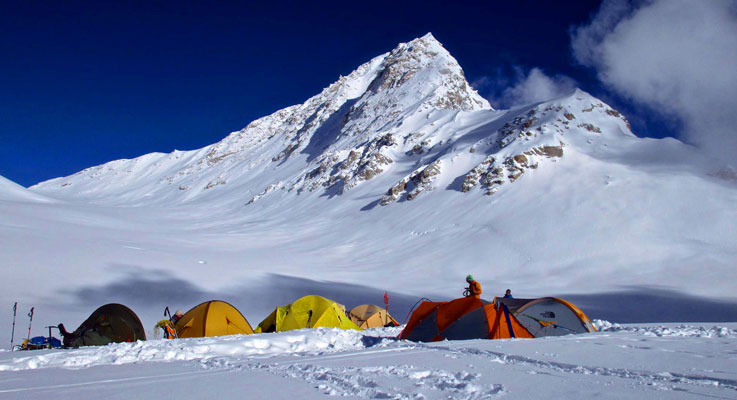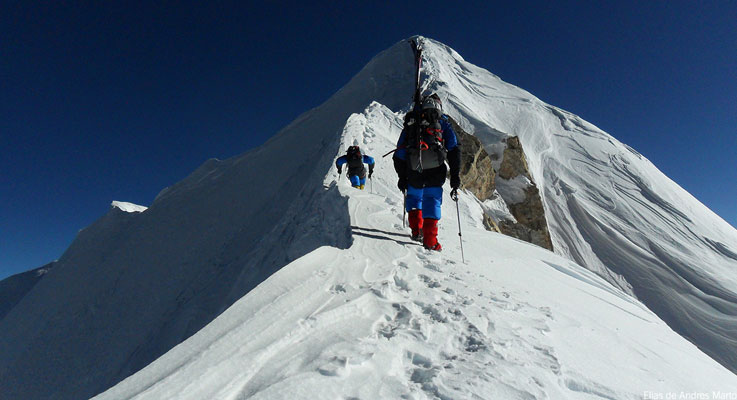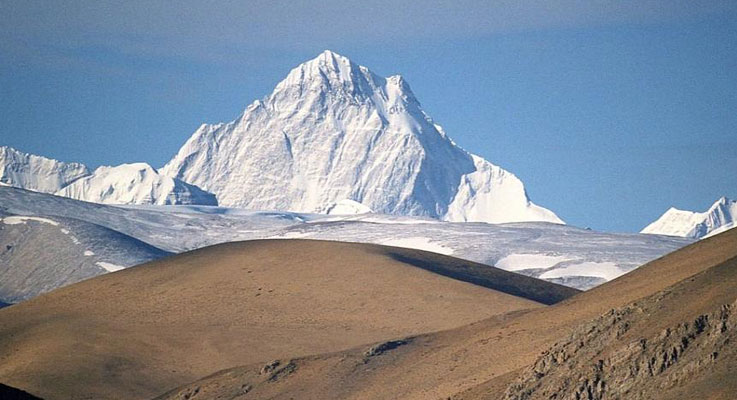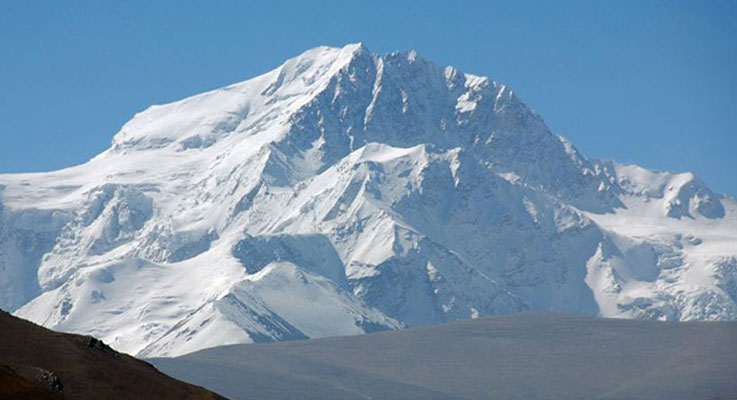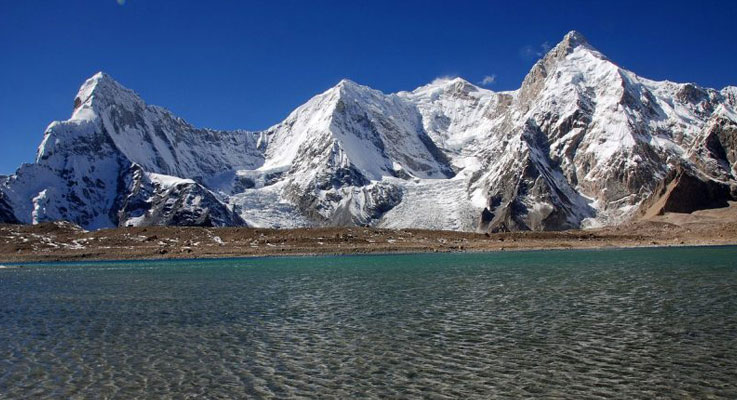-
Day 1
Arrival in Kathmandu (1,345m/4,413 ft)
Upon arriving at atTribhuwan International Airport in Kathmandu, you will be received by our airport representatives who will warmly greet you and transfer to the hotel on a private tourist vehicle. We provide 3-star accommodation in the city and we arrange for a trip briefing with dinner in the evening.
-
Day 2
Visit old town of Kathmandu
A professional guide and vehicle are provided for a day of sightseeing in and around Kathmandu city. We visit some of the UNESCO World Heritage Sites in the city along with other interesting cultural monuments that dot the valley. These include Boudhanath Stupa (the largest Buddhist shrines in the world), Pashupatinath (the holiest Hindu temple in the world), Durbar Squares (Palaces and fortresses of medieval Kings), along with other popular cultural attractions. We get to observe the lifestyle of Nepalese people, holy sadhus and monks, fascinating history as well as awe-inspiring architecture.
-
Day 3
Official formalities in Kathmandu
Formal briefing at the Ministry of Tourism. The expedition leader will check that everyone’s equipment is in working order. Overnight at Kathmandu hotel.
-
Day 4
Final preparation day in Kathmandu
Final opportunity for last-minute purchases. Overnight at Kathmandu hotel.
-
Day 5
Fly to Lhasa
Early morning transfer to the Kathmandu International Airport for the hour-long flight to Lhasa. This stunning flight takes us directly across the main Himalayan range, providing magnificent mountain views. After landing at Gonggar Airport and meeting our Tibetan guide, Lhasa is a further two hour drive. The remainder of the day will be left unscheduled for participants to rest and adjust to Lhasa's higher altitude. Overnight at Lhasa hotel.
-
Day 6
Sightseeing in Lhasa
We spend today visiting several of Lhasa's many monasteries in the company of a guide and interpreter. One of these is the Sera Monastery, one of the best-preserved monasteries in Tibet. Several hundred monks live and study within its whitewashed walls and golden roofs. After lunch we'll visit the Norbulingka, the summer palace of the Dalai Lama, as well as the Jokhang Temple. This temple is possibly the most sacred shrine in Tibet and there is always a procession of devout Tibetans making their way through the complex. Surrounding the Jokhang is the Barkor, a maze of narrow cobbled streets that is the central market of Lhasa. Overnight at Lhasa hotel.
-
Day 7
Second day of sightseeing in Lhasa
In the morning, we visit spectacular Potala Palace, which dominates the city of Lhasa. The building served as the seat of the Dalai Lama from the 17th century until 1959, and contains numerous grand state rooms and many important chapels. After lunch we visit the Drepung Monastery, founded in the 14th century and once the largest in the world, with a population of around 10,000 monks. These days that figure is down to several hundred, but there is still much at the monastery of interest, especially because it was left relatively unscathed during the Cultural Revolution. Overnight at Lhasa hotel.
-
Day 8
Drive to Shigatse
We set off in jeeps for the six hour drive across the Tibetan plateau. Soon after leaving Lhasa, we reach the banks of the Tsang Po, which becomes the Brahmaputra River when it enters India. We drive upstream for a while before turning southwest through barren desert-like valleys to reach Shigatse (3900m), Tibet's second largest city. Overnight in a hotel.
-
Day 9
Drive to Xegar
Today continues with another six hour drive, along the Tibetan highway. As we drive the northern edge of the Greater Himalaya comes into view, providing a spectacular panorama of peaks, including Everest. We overnight in a hotel 7km outside the main town of Xegar (4000m). If there is time, we may be able to visit the main town and its hilltop monastery. Overnight at Xegar hotel.
-
Day 10
Acclimatization Day
This is an important day, allowing us to cope with the great height increase to Chinese base camp tomorrow. General advice is to take it easy, but a visit the main town and a gentle hike up to its hilltop monastery (4200m) are highly recommended. Overnight at hotel.
-
Day 11
Drive to Shishapangma base camp (5000 meters)
Magnificent views of Shishapangma and many other mountains make today's road journey an unforgettable one. After crossing the Thang La (5200m), we turn off the Lhasa highway and head west along the road to Mount Kailash for a further 25 km. Turning south onto an even smaller track, we eventually arrive at the base camp (5000m). This is situated close to the Yambughangala River, which drains on the north side of Mt. Shishapangma. Overnight at tented camp.
-
Day 12-13
Base camp preparation
The first few days at the base camp are spent preparing our equipment and organizing loads for the yaks to carry up the mountain. These are also important days for our acclimatization, as we will all feel the effects of living at 5,000m and will need to be in good shape for the long route to the base camp. Overnight at tented camp.
-
Day 14
Hike to advance base camp
After loading up the yaks with all the equipment, we set off with them on the 20km (12 mile) trek to the advance base camp. Initially we follow a jeep track to a plateau above the river, and then the west bank of the valley to ABC (advance base camp) near the snout of the Yambughangala Glacier (5600m). This is in an impressive location, with the giant white pinnacles of the glacier leading up the valley to Shishapangma. Here we unload the yaks and set up camp, which will serve as the take-off point for the climb. From here the Sherpas will do most of the load carrying. Overnight at tented camp.
-
Day 15-40
Climbing Mt. Shishapangma
Above the advance base camp we will place two or three camps, depending on conditions. The climb starts with a long trek leading to a large camping area at 6400m. From here we traverse further, gaining the shoulder of the mountain and arriving at Camp 2 (7100m). All of the climbing is on scree or snow and presents little difficulty. The northwest ridge is easily accessible from Camp 2, although it may involve snow and ice climbing at a steepness of fifty degrees. Fixed ropes are placed on all steep/crevassed sections. If a high camp is required, it is placed according to the prevailing conditions. The summit ridge is very long and usually reached by tracing a rising diagonal route across the snow slope below to reach the ridge, as close to the summit as possible. The west summit (8008m) of Shishapangma is quicker to reach than the main summit and is the usual point reached by 'summiteers.' Plenty of time is allowed in the event of bad weather and slow acclimatization. We intend to have enough time at the end of the expedition to make a complete withdrawal from the mountain, removing all equipment and waste and taking it back to ABC.
The climb
The expedition leader, in discussion with the team members and Sherpas, manages the day to day running of the expedition. The Sherpas carry the majority of the equipment to establish the camps, leaving us to familiarize ourselves with the mountain and grow better acclimatized, a long process. There are several different methods to prepare for the summit bid, and the will be discussed in detail on the mountain.
The basic plan is to spend three to four days at ABC, then take a six to seven day trip up on the mountain, sleeping as high as Camp 2 (7100m). Logistically, it takes some sound preparation and organization to ensure all the camps are set up with the appropriate supplies. Then we need a window of good weather for the summit attempt, often a waiting game.
Summit route options
Summit day means a very early start. The best route to the true summit is crossing the face, but we judge at the time whether this is safe.
The route goes first to the central summit, which we must fix with ropes. From there to the true summit is a knife-edged ridge that is rarely in good condition for traversing, although it is only truly challenging for less than a rope length.
The other possibility is a new route: from Camp 3 we descend a little onto a broad plateau and will probably have to put up a camp there. The slopes from there on are moderate, although there are a few crevasses.
Safety and conduct of the climb
Mt. Shishapangma has by now been climbed by many, and the mountain and its potential dangers deserve respect from all those attempting it. Reaching the summit late in the day would be a serious mistake, and the guides will ensure that appropriate timing is adhered to. The aim of the expedition will be to ensure that as many team members as possible reach the summit. However, this will not be to the detriment of safety. Safety will govern all decision-making on the mountain and will be based on the sound mountaineering judgment of the highly experienced mountain guides. To support the guides on the mountain, Ace the Himalaya will plan the expedition as thoroughly and carefully as possible using experience and knowledge of the mountain to maximum benefit. Ultimately, the leader will have sole discretion on the implementation of any plan to climb the mountain, and he will ensure that safety remains the prime consideration.
The high mountains of the Himalayas, Shishapangma in particular, are there for us to climb and enjoy. The priority will be to enable all team members to fulfill their potential on the mountain, returning home safely and with a life-enhancing experience. Whether or not expedition members reach the top, the expedition should be an enjoyable and rewarding achievement that will form the basis of many long cherished memories and friendships.
-
Day 41-42
Cleaning the mountain
It takes several days to clear all the camps, and remove all waste from the mountain.
-
Day 43
Packing advance base camp
More packing! Occasionally we can arrange for the climbers to leave ahead of the expedition leader and Sherpas. We judge at the time, as conditions allow.
-
Day 44
Trek to base camp and drive to Zhangmu
We trek to the base camp, in the afternoon catching a ride to Zhangmu. Overnight at guesthouse.
-
Day 45
Drive back to Kathmandu
We should arrive in Kathmandu late afternoon or evening ready to enjoy the good restaurants. Overnight at Kathmandu hotel.
-
Day 46
Leisure day in Kathmandu
Time for relaxation and shopping. Once back in Kathmandu, Ace the Himalaya will host an evening barbecue as a chance to celebrate the expedition, say farewell, and thank the Sherpas and team members for their support and friendship throughout the trip. Overnight at Kathmandu hotel.
-
Day 47
Transfer to airport for flight departure
An Ace airport representative will escort you to Kathmandu International Airport for your flight departure from Nepal.

